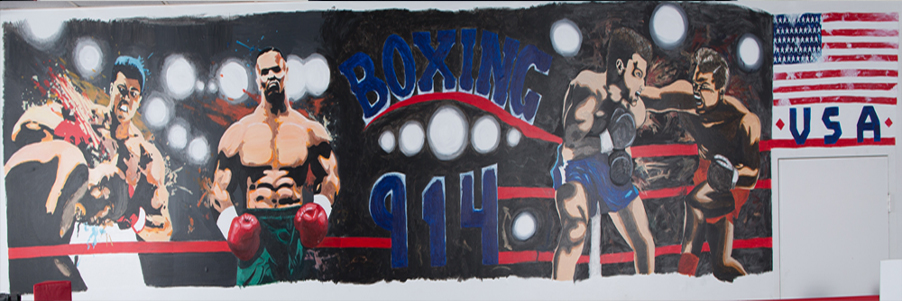Boxing is likely one of the oldest sports in the world. As a means of survival, our ancient ancestors likely openly fought one another, just as animals today fight tooth and nail for food and for mates. While it might not have been the same standardized type of boxing that we see in rings today, surely, they must have come to fisticuffs (fist fights) more than once in pursuit of a full stomach or a mate. It did, however, quickly become a sport. Fighting as a sport is as old as civilization itself, with very real records of boxing matches in writings from both Egypt and Mesopotamia (two of the world’s oldest civilizations).
One notable reference to early boxing is in the Iliad. During Patroklus’s funeral games, two characters reportedly have a “prizefight.” In Ancient Greece, boxing (like most things), was probably more ceremonial than it was a true sport like we think of today, and did not have the same kinds of rules that boxing relies on today. Instead, the fighters just kept hacking away at each other until one gave up.
The Age of Enlightenment and Boxing
The Medieval Period saw very little boxing. Obviously, people still got into physical altercations, but there was little to no approved fisticuffing during this time. People were probably too busy with festivals and archery and jousting and actual wars to spend any real time fighting each other for sport. It wasn’t until the Age of Enlightenment began that boxing once again became part of mainstream society.
This was partially due to the Age of Enlightenment’s fascination with all things ancient. There was a renewed interest in Greece and Roman culture, architecture, history, and art. Along with these things came interest in ancient sports, including boxing. England quickly became the home of boxing, and with the introduction of rules and betting, modern boxing was born.
Much of what we see today as the tenants of boxing originate from a single man: John Broughton, who was a champion of the boxing scene in the mid-1700s. He literally wrote the rulebook and also recommended the use of gloves (they were called “mufflers,” back in the day).
The Regency
After Broughton left the fighting scene, there was decreased interest in boxing, especially among the trendsetting upper classes. Luckily for boxing, before the turn of the 19th century, boxing once again became popular, largely due to the war between England and France. Why would this bring back the popularity of boxing? Because, as wars often do, the war affected a surge in British nationalism, causing more and more men to desire to take part in what was believed to be an inherently British sport.
One major player during this time was Daniel Mendoza. Widely known as “The Jew,” (as he was Jewish and times were far less politically correct back then), he had a hand in completely changing how men boxed. Before Mendoza, there was little strategy in the ring, just two men slugging each other as fast as they could. It was Mendoza’s distinctive fighting style, that was one part fighting and one part dancing, which soon permeated the entire sport.
The Victorian Period
It was during the Victorian Period that boxing really started to become streamlined. The introduction of the Queensberry rules removed any and all wrestling from the sport, and required the fighters to wear gloves. The introduction of a rule requiring gloves largely changed how boxers would stand and fight. While some might believe that gloves would make the sport safer, (because they protect the knuckles of the boxer), they no longer had to hold back their strength to save their own bones. This meant faster, stronger punches that were sometimes even deadly. This is when Mendoza’s fighting style, that was a little more bob and weave and a little less about just beating someone to death, became even more popular.
Boxing in America
Boxing came to America as it was once again began waning in popularity in Britain. The early 19th century began to see boxing matches popping up around the country, though it did not really take hold until the late 1800s. Surprisingly, it was Christianity that picked up boxing and touted it as a display of both physical and moral strength. It was a favorite of President Teddy Roosevelt’s and partly the cause of the development of the YMCA.
Professional Boxing
Boxing, despite being championed by many churches, was not necessarily legal all over the world. There was not yet such a thing as professional boxers, its connection with gamblers and corruption kept it from being legalized.
By the 1920s, however, boxing had begun to really take root in American culture and was soon legalized. This so-called “Golden Era” was dominated by the famous Jack Dempsey. Professional boxing and prizefights only became more and more popular. Once television was put into people’s home fights became televised and the birth of true boxing legends like Muhammad Ali and Sugar Ray Robinson were born.
Today
While boxing matches are not as popular as they were in the days of Ali or even Mike Tyson, there are still televised prizefights and boxing still has a devoted following. Today, boxing has to compete with hundreds of other televised sporting events. Unlike many of these sports, boxing does not have a season, it just has matches that happen throughout the year.
While boxing might not be as popular today as it was in its heyday, it is still an impressive sport, one which few people truly understand. Complex, beautiful, and with a long and rich history, it helped form not just the national identities of Britain and America, but also countless other countries.






